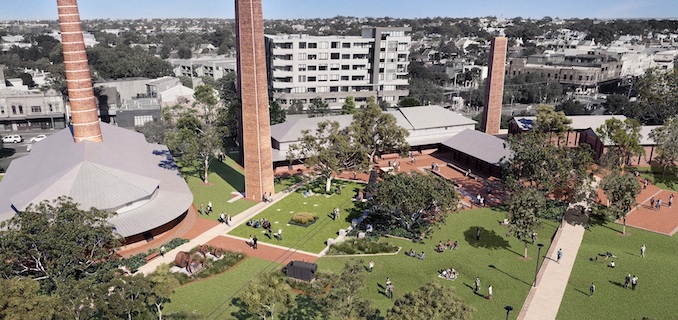
The historic brick kilns in Sydney Park are a local landmark – and one of them is soon to be given a new purpose as a venue for art exhibitions and small-scale community events.The City of Sydney is restoring the interior of one of the brick kilns as part of a transformative project that will also improve park access, stabilise the structures as well as creating a publicly accessible space.
The internal space in Down Draught Kiln 2, near Sydney Park Road, will be available for community gatherings and City of Sydney events each year.
“This is the largest intact precinct of brick kilns in the state and opening up a small part of it for art exhibitions and other community events is a fantastic result for our communities,” Lord Mayor of Sydney Clover Moore AO said.
“I can’t wait to see what our team and communities have in store for this vitally important part of our industrial heritage, which is now part of our cultural future.
“But this work is about more than just the brick kilns. At the City of Sydney, we work hard to continually improve our parks and this project will improve access for the people of St Peters, Newtown, Erskineville and Alexandria.
“Sydney Park has space to move, sporting and fitness facilities, a cycling centre, playground, a skate park, our city farm and a host of native wildlife. This project to restore the brick kilns and chimneys site will further improve this award-winning park.”
Down Draught Kiln 2 will have a raised lawn area and plaza spaces for small outdoor gatherings. The selected kiln is the only one of the structures that can accommodate internal gatherings, with the larger brick kilns having very small internal spaces that are hard to access.
A tender process will be undertaken to appoint a contractor with construction onsite due to start within the next 12 months.
The kilns were built in the 19th century and are located in the north-west corner of the park. They are seen as a symbol of the city’s industrial heritage and hold historical and cultural significance.
The Sydney Park brick kiln and chimney precinct contains substantial remains from the brick making industry that once dominated the area. Shale was extracted from deep pits, crushed and pressed into green bricks that were fired in the large kilns.
Winsor Dobbin
